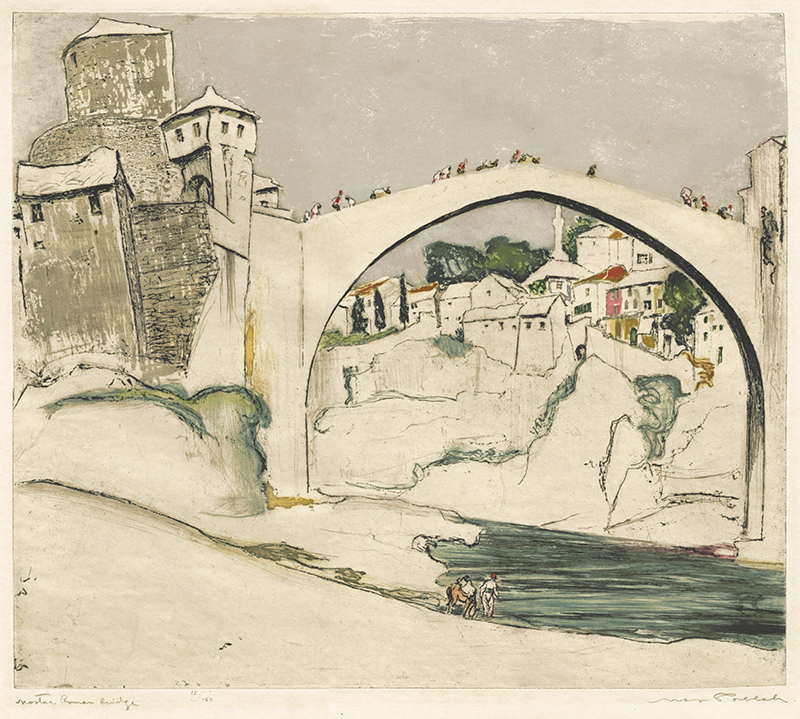
19th, 20th & 21st Century Fine Prints
707-546-7352 · fax 707-546-7924 · web: www.annexgalleries.com · email: artannex@aol.com
Mostar Roman Bridge by Max Pollak

Mostar Roman Bridge
Max Pollak
Mostar Roman Bridge
Max Pollak
1886 - 1970 (biography)Mostar is a city that straddles the Neretva river between Bosnia and Herzegovina. The two sides of the city are linked by the iconic Stari Most (literal translation: "Old Bridge"). An alternate title for this etching refers to Mostar as part of Yugoslavia, which gives us an indication of its creation date.
The bridge, built in the 16th century, withstood both World Wars before being destroyed by paramilitary forces during the Croat-Bosniak war in 1993. However, a project to rebuild was quickly put into motion and the bridge reopened in 2004.
Max Pollak, painter and printmaker, was born in Prague, Czechoslovakia in 1886. He was raised in Vienna and, in 1902, he entered the Vienna Academy of Art where he studied under William Unger and Ferdinand Schmutzer. In 1912, Pollak traveled to Italy, France, and Holland to study and paint. During the First World War, he was appointed painter of the Austrian Army.
He immigrated to the United States in 1927, living for a time on the east coast where he produced a series of color aquatints of New York, Cincinnati, and Detroit. His first exhibition was at the 57th Street Art Gallery in New York and he was commissioned by Theodore Dreiser in 1929 to illustrate his book, My City. In 1938, Pollak and his wife, Friedl, moved to San Francisco, California. Pollak was inspired by his new city and its environs and produced beautiful views of San Francisco Bay Area. Later travels included trips to Mexico and Guatemala.
Max Pollak was a member of the Chicago Society of Etchers and the California Society of Etchers. His work is represented in the collections of the Magnes Collection of Jewish Art and Life, Berkeley, California; the Jordan Schnitzer Museum of Art, University of Oregon, Eugene; the British Museum, London; the Metropolitan Museum of Art and the New York Public Library, New York; the Oakland Museum of California Art; the Fine Arts Museums of San Francisco, California; and the Smithsonian American Art Museum, Washington, D.C.


